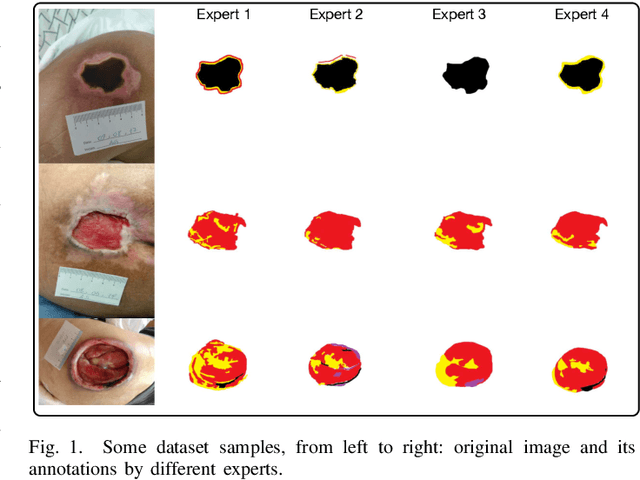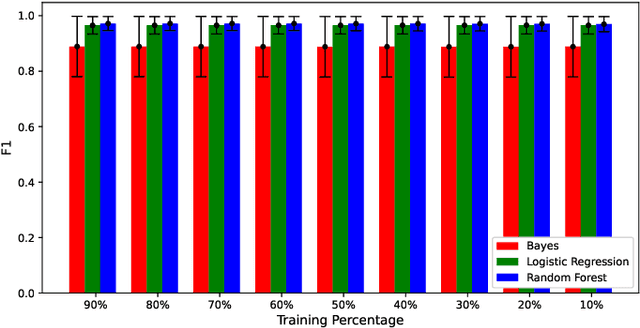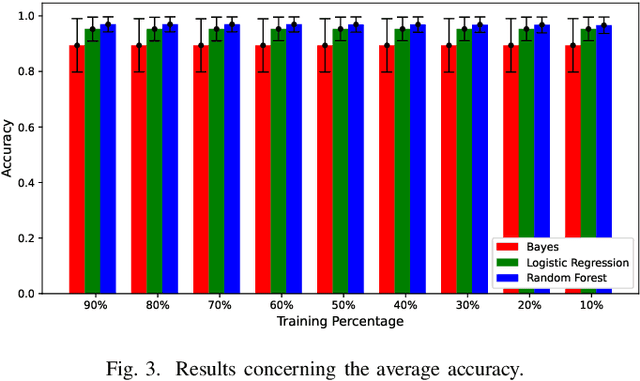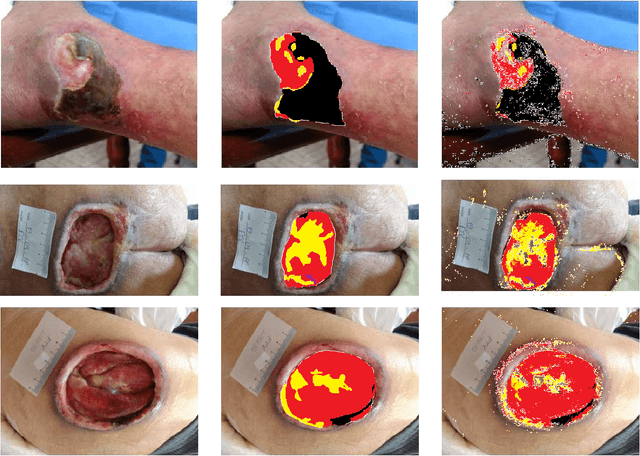Clayton R. Pereira
ComplexWoundDB: A Database for Automatic Complex Wound Tissue Categorization
Sep 26, 2022



Abstract:Complex wounds usually face partial or total loss of skin thickness, healing by secondary intention. They can be acute or chronic, figuring infections, ischemia and tissue necrosis, and association with systemic diseases. Research institutes around the globe report countless cases, ending up in a severe public health problem, for they involve human resources (e.g., physicians and health care professionals) and negatively impact life quality. This paper presents a new database for automatically categorizing complex wounds with five categories, i.e., non-wound area, granulation, fibrinoid tissue, and dry necrosis, hematoma. The images comprise different scenarios with complex wounds caused by pressure, vascular ulcers, diabetes, burn, and complications after surgical interventions. The dataset, called ComplexWoundDB, is unique because it figures pixel-level classifications from $27$ images obtained in the wild, i.e., images are collected at the patients' homes, labeled by four health professionals. Further experiments with distinct machine learning techniques evidence the challenges in addressing the problem of computer-aided complex wound tissue categorization. The manuscript sheds light on future directions in the area, with a detailed comparison among other databased widely used in the literature.
Hierarchical Learning Using Deep Optimum-Path Forest
Feb 18, 2021



Abstract:Bag-of-Visual Words (BoVW) and deep learning techniques have been widely used in several domains, which include computer-assisted medical diagnoses. In this work, we are interested in developing tools for the automatic identification of Parkinson's disease using machine learning and the concept of BoVW. The proposed approach concerns a hierarchical-based learning technique to design visual dictionaries through the Deep Optimum-Path Forest classifier. The proposed method was evaluated in six datasets derived from data collected from individuals when performing handwriting exams. Experimental results showed the potential of the technique, with robust achievements.
 Add to Chrome
Add to Chrome Add to Firefox
Add to Firefox Add to Edge
Add to Edge